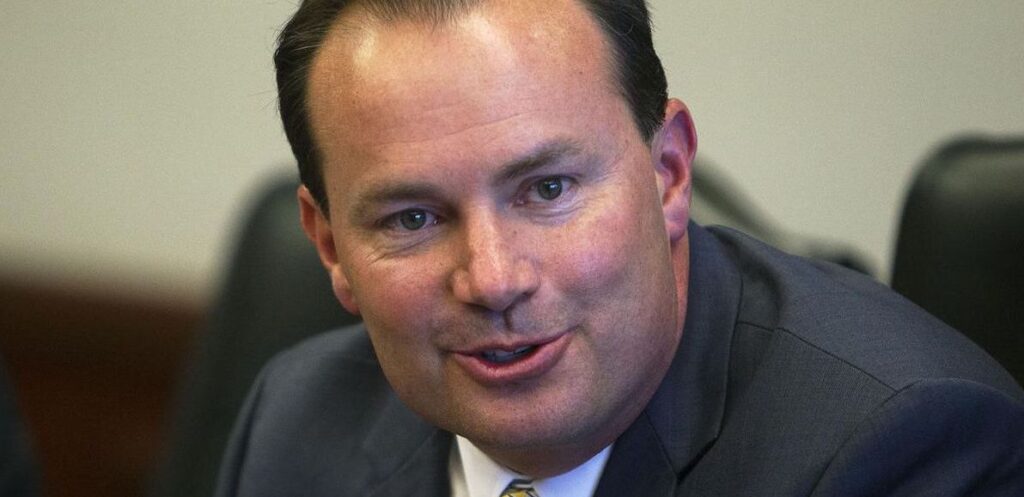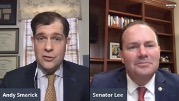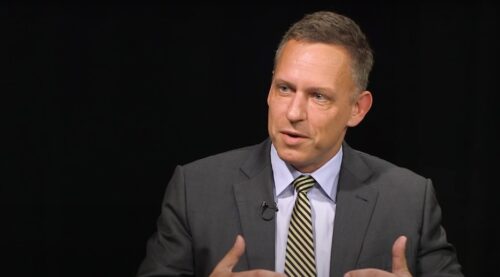And he wants more of it to flow, and from more people.
“Government doesn’t have the ability to create institutions of civil society, and bad things tend to happen when government pretends that it does,” U.S. Sen. Mike Lee, Republican of Utah, told Manhattan Institute senior fellow Andy Smarick during an online forum last month. “There are things that governments can do that can weaken those institutions. One of our jobs is to make sure that those aren’t weakened and to figure out where [government] might be weakening them.”
Lee chairs the Congress’ Joint Economic Committee, the Social Capital Project of which has been researching the changing nature of civil society and our associational life—the web of relationships through which we engage with each other, in our families, communities, workplaces, and religious congregations.
“We believe there are places where it’s possible to provide meaningful and appropriate federal-policy recommendations, especially insofar as those recommendations relate to removing some kind of impediment to social capital that is currently imposed by the federal government,” Lee said during the event, “An Agenda for Associational Life.”
Driving giving
Lee gave an example: charitable giving. “Nonprofits, churches, and other voluntary institutions play an absolutely essential role in American life,” he said to Smarick.
They help provide for people’s needs, supporting the stability of community institutions and supplying goods such as education and the arts—things that people can’t just create for themselves. You have to do that as part of a group or a community.
Charitable giving thus becomes the lifeblood of organizations like that and without donations—donations in kind, of money, and of time and talent, and so forth—these organizations simply can’t do what they do, including providing the indirect benefits of personal connectedness, reciprocity, and trust that are invaluable to the thriving of any community or of any country.
The Social Capital Project looked into charitable giving, and the federal tax deduction meant to encourage it, in November 2019. “We found that while total American charitable giving has increased in most years over the last half century or so, the overall percentage of Americans giving has actually decreased. It’s gone down from 66% in 2000 to 56% in 2014,” according to Lee.
“There has been a particularly pronounced drop among lower-income Americans,” he continued. “Their share of individual giving as a proportion of total giving has dropped over time. It was at 83% in 1978, [and] went down to 68% in 2018.
“The foundations, corporations, and bequests are all driving American giving.”
Itemizers and incomes
To give more Americans a role in philanthropy, the Social Capital Project explored reforms of the charitable deduction. The charitable deduction allows taxpayers to deduct the value of their charitable contributions to qualifying nonprofit organizations, up to 60% of the taxpayer’s adjusted gross income.
In 2018, as noted in the Social Capital Project’s 2019 report, the charitable deduction for individuals reduced federal revenue by about $54.1 billion. In 2020, according to an estimate from Congress’ Joint Committee on Taxation, the charitable deduction for individuals will have reduced federal revenue by $52.4 billion.
The charitable deduction is available only to those who itemize their deductions, however, and they usually have higher incomes (and often good tax-preparing accountants). Eighty-seven percent of filers take the standard deduction, a number that has increased since the tax overhaul in 2018 raised it beyond the total what most would even be able to itemize anyway.
As Lee told Smarick, “the benefits of the deduction overwhelmingly go to high-income taxpayers, and that has produced results that we shouldn’t find terribly surprising.”
Making the charitable deduction permanently “available to both itemizers and those taking the standard deduction,” Lee continued, “would tend to ensure that all taxpayers’ donations received the same tax treatment and the government isn’t, however unintentionally, discouraging American philanthropic efforts, especially among those who are contributing on a smaller scale.”
Last March, as the COVID-19 crisis was just beginning, the CARES Act allowed for a one-time charitable deduction of up to $300 for individual non-itemizers and up to $600 for couples not itemizing. “This is a kind of policy that’s really important, especially during a pandemic,” Lee said. “It tends to illustrate the way that the tax code should treat charitable giving not only during a pandemic, but in any year.”
These provisions were extended for one year in the stimulus bill Congress passed and the President signed at the end of last year. Some have proposed permanently increasing the charitable-deduction amount for non-itemizers.







